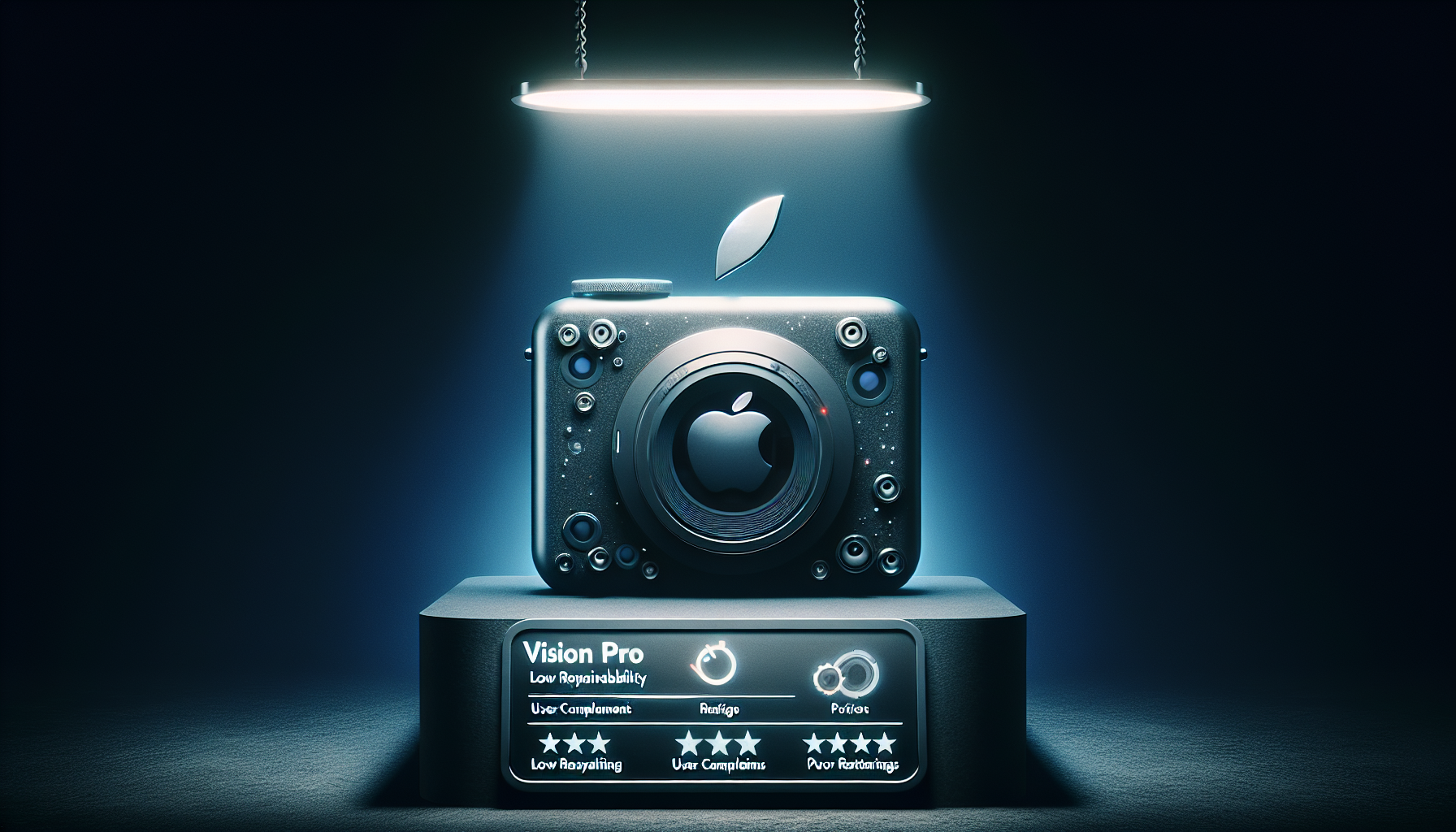 ## Apple Vision Pro and New Cameras Get Low Scores for Repairability
## Apple Vision Pro and New Cameras Get Low Scores for Repairability
Emergence of Right to Repair Laws
In December, New York became the pioneering state to pass a “Right to Repair” law for electronics, paving the way for states like Oregon and Minnesota to follow suit. These laws aim to enable consumers by requiring manufacturers to offer repair manuals, diagnostic tools, and spare parts. Despite this legislative progress, a recent study indicates that many new gadgets still have poor self-repairability.
US PIRG’s Leaders and Laggards Report
On Monday, the US Public Interest Research Group (PIRG) issued its Leaders and Laggards report, assessing the repairability of 21 devices under New York’s electronics Right to Repair law. The nonprofit scored these devices on the availability and quality of repair manuals, spare parts, and other essential repair resources.
Nathan Proctor, senior director for the Campaign for the Right to Repair for the US PIRG Education Fund, noted that the report focused on new models, as the law only pertains to newly manufactured products. A range of devices from well-known brands was included.
Disappointing Repairability Scores
While all four smartphones in the report received high marks (A-minus or A), other devices performed poorly. The HP Spectre Fold foldable laptop earned a D-minus, with low scores in parts availability (2 out of 10) and repair manual accessibility (4 out of 10).
The report also scrutinized four camera models—Canon’s EOS r100, Fujifilm’s GFX 100 ii, Nikon’s Zf, and Sony’s Alpha 6700. All but one received an F grade, with Sony’s camera receiving a D-plus. Two VR headsets—Apple’s Vision Pro and Meta’s Quest 3—were also graded F.
Issues Accessing Repair Manuals
New York’s Digital Fair Repair Act mandates that brands offer consumers the same diagnostic tools, parts, and repair manuals available to their technicians. Nonetheless, PIRG encountered significant challenges obtaining these materials for some new tech products.
For example, Sony’s PlayStation 5 Slim got a 1/10 score for manual accessibility. Apple’s Vision Pro scored a 0/10, while Meta’s Quest 3 only managed a 1/10. The report noted that only 12 out of 21 products provided replacement procedures, and just 11 listed the tools needed for disassembly.
Manufacturer Responses and Compliance Problems
The report indicates that customer service interactions often proved unhelpful. Despite Apple launching its Self Service Repair Store in April 2022, PIRG found that customer service agents were unaware of self-repair options for Apple products. Similarly, Meta’s customer service rep stated the company does not offer repair or part replacements for the Quest 3.
Samsung required an International Mobile Equipment Identity (IMEI) number to provide a service manual, while Canon asked for proof of purchase to access parts and documents for self-repairs.
Barriers to User-Repairability
The difficulty in accessing repair manuals and contradictions between customer service responses and legal requirements show that companies still have a long way to go to enable self-repairs. PIRG’s report urges New York Attorney General Letitia James to enforce adherence to the new law and consider stronger legislation.
Legislative Hurdles and Prospects
PIRG is advocating for more stringent laws, akin to those in Minnesota and California, which offer broader coverage, including business computers and older devices. Updating New York’s Fair Repair Act remains challenging due to political and industry opposition.
Conclusion
Although Right to Repair laws mark significant progress in consumer empowerment, the recent PIRG report highlights ongoing obstacles to achieving broad self-repairability. Manufacturers must improve access to repair materials and ensure that customer service teams are well-versed in self-repair options.
Q&A Session
Q1: What is the Right to Repair law?
A1: The Right to Repair law requires manufacturers to provide consumers with access to repair manuals, diagnostic tools, and spare parts, facilitating self-repairs.
Q2: Which states have enacted Right to Repair laws?
A2: New York was the first, followed by Oregon and Minnesota.
Q3: How did Apple’s Vision Pro score in PIRG’s report?
A3: Apple’s Vision Pro received an F grade for user repairability, earning a 0/10 in manual accessibility.
Q4: Why is it hard to access repair manuals for certain devices?
A4: Manufacturers often restrict access to repair manuals and require proof of purchase or specific identifiers like IMEI numbers.
Q5: What issues did PIRG face in their evaluation?
A5: PIRG struggled with accessing repair manuals and encountered customer service representatives often unaware of self-repair options.
Q6: What are PIRG’s recommendations from the report?
A6: PIRG suggests stricter enforcement of current laws and advocates for more comprehensive legislation similar to those in Minnesota and California.
Q7: What benefits do consumers gain from Right to Repair laws?
A7: These laws make repair easier and more affordable, extending the life of electronics and reducing electronic waste.